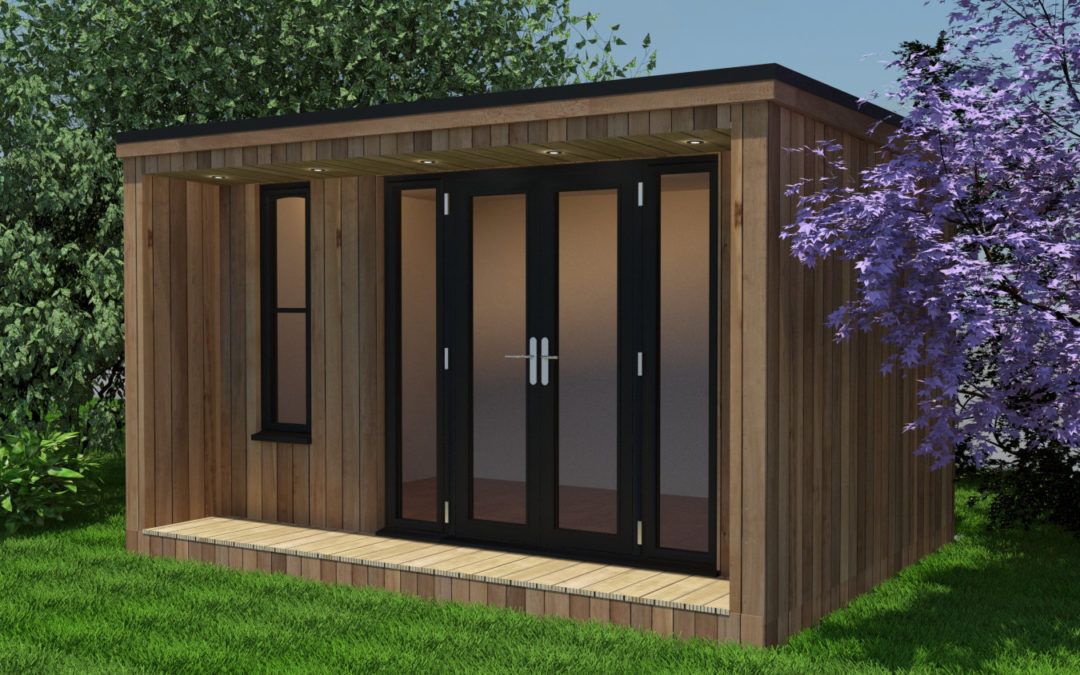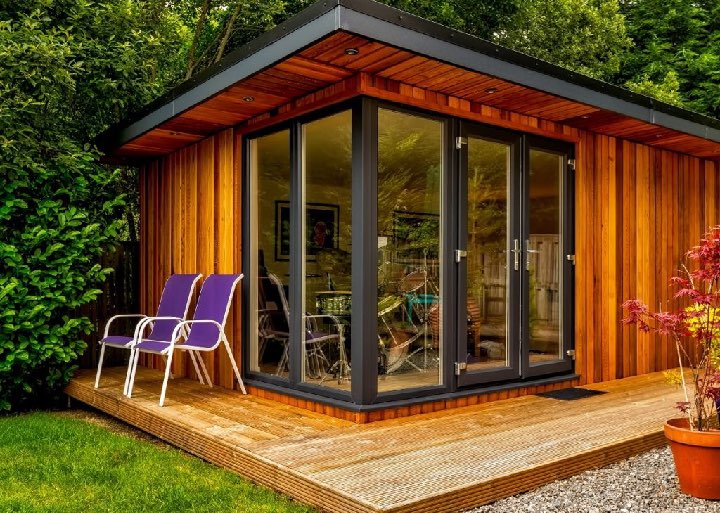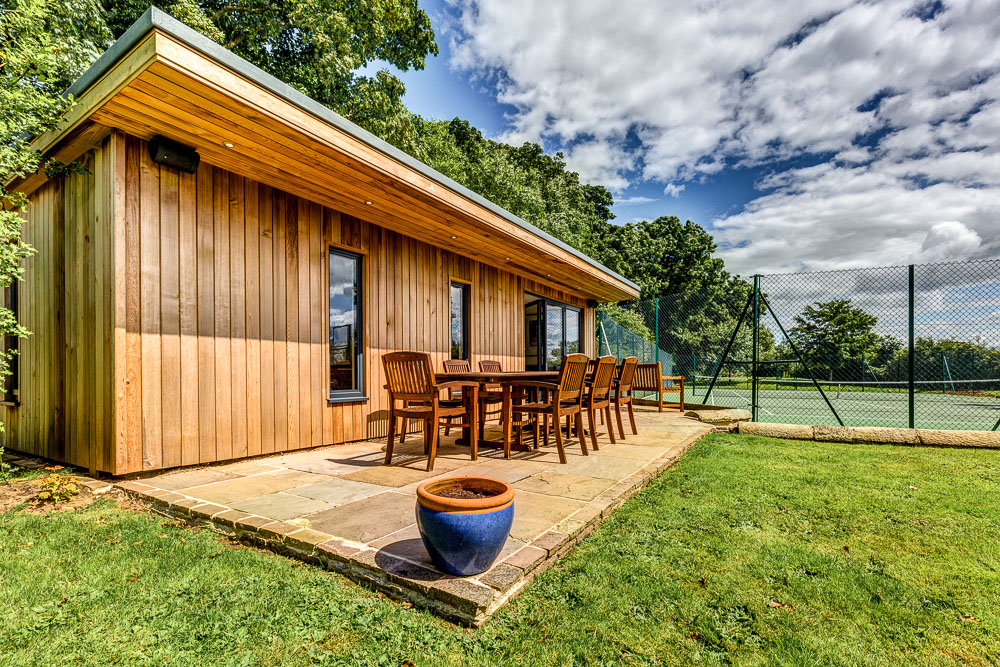Good Tips On Planning Permission For Garden Summer Houses
Wiki Article
What Planning Permits Are Needed For Gardens, Rooms, Etc. Within Conservation Areas
When making gardens, conservatories, outhouses, garden offices, or extensions in conservation areas, specific restrictions are in place to protect the character and appearance of these designated areas. Here are the main factors to consider when planning permission is granted within conservation zones: General Restrictions:
A conservation area may require permission to plan any building extension, addition or any other construction that is typically included in permitted development rights. Garden rooms, sheds or other outbuildings are all included.
Size and Scale
Any structure, regardless of its size, may need planning permission if it is believed that the structure will affect the conservation area's character. There are stricter controls over the dimensions and scale of extensions or new buildings in comparison to areas that are not designated.
The location of the property
Planning permission is more likely to be required for extensions and buildings that are located on the front or side of the property. Rear of buildings can also need permission if they are visible from public areas, or if they affect the overall character.
Materials and Design
Design and materials are essential in conservation zones. The construction or extension must be constructed using materials that are conforming to the historic or architectural interest of the area. This requires a planning permit to be granted.
Demolition:
Demolition of old structures or portions of buildings including outbuildings, boundary walls, usually requires planning permission in conservation areas to ensure that any changes are consistent with the area's character.
Height Restrictions:
Height restrictions are stricter in conservation zones. If a building is greater than 2.5 meters in height It is highly likely that planning permission will be required.
Impact on Surrounding Areas
Planning permission may be required in the event that a proposed structure extension, expansion or alteration to the appearance or setting of the conservation zone could negatively impact the appearance of the area and its surroundings.
Use of the Building:
Planning permission may be required even if the garden room or outbuilding falls within the allowed dimensions. This could be due to changes in the usage of the house.
Expanding and altering
The majority of extensions that change the appearance of the building or surpass the limits of volume or size need planning approval. This includes conservatories as well as other major changes.
Curtilage Structures:
Structures within the curtilage of a listed building located in a conservation area always require planning permission. This is for new extensions, outbuildings, or modifications.
Protected Trees:
In conservation zones, trees are usually protected. Tree works consent could be required if you plan a project that could impact trees.
Local Authority Guidelines
The local planning authority may create specific guidelines or limitations for each conservation zone. These may include specific guidelines on what is permissible and not, adapted to the particular characteristics of the area.
In summary, obtaining planning permission in the conservation area requires a detailed analysis of how the proposed garden room or conservatory, outhouse, garden office or extension will impact the architectural and historic characteristic. It is crucial to talk with your local authority early on in the process of planning the plan. This will ensure that it is compliant with all relevant guidelines and regulations. See the top heaters for garden rooms for blog recommendations including what size garden room without planning permission, garden office electrics, garden room conservatory, out house, garden office electrics, outhouse buildings, garden room vs extension, garden rooms in St Albans, outhouses, garden outhouse and more.

What Is The Required Planning Permission Needed For Garden Rooms, Etc.?
There are more stringent guidelines and requirements when planning to construct garden rooms or conservatories on the site of a historical building. Here are the essential points regarding planning permission for these projects A Listed Building Consent is required:
Any alteration, extension or new construction within the curtilage of a listed building usually requires listed building consent as well as planning permission. Changes can affect the special character of the listed building.
Impact on the Historical Character
This is inclusive of garden rooms and outbuildings. Included in this are garden rooms and outbuildings.
Materials and Design
The new structure's design and materials must reflect the architectural and historical significance of the current building. This may require bespoke designs and the utilization of traditional materials, requiring the approval of a planner.
The building is situated in close proximity to the listed building:
New constructions that are built around an historic property will be scrutinized for their impact on the setting and its appearance. It will be necessary to get planning permission in order to make sure that the new structures do not alter the appearance of the building.
Size and Scale:
The size and scale should be proportional to the structures listed. Planning permission and detailed assessment are more likely to be required for larger structures.
Location on the Property
The location of the proposed structure (whether in front, side or back of the listed building) can affect the need for planning permission. Locations that are visible or impacting important views of the building usually require a more careful examination.
Changes in the internal structure:
Even if it is a detached structure, any changes to the interior to a listed structure (such the creation of new entry points) require planning permission and listed-building approval.
Conservation Area Overlap
The listed building must be located within Conservation Area. To ensure that the building is in compliance with listed building regulations and conservation area regulations Planning permission is required.
The Building is Used to:
The purpose of the outbuilding or garden room could influence the requirement for planning permission. The planning authority will be more attentive to uses that indicate an increase in significance like commercial or residential usage.
Structural Impact:
Any building that may affect the structural integrity of the listed building requires planning permission and listed building permission, ensuring that both the existing and new structures are properly and properly integrated.
Local Authority Guidelines:
Local authorities typically have guidelines for listed buildings that outline the types of construction and changes are permitted. Planning permission can ensure that these guidelines are followed.
Professional Evaluations:
Conservation professionals are often required to conduct thorough analyses for plans of works on properties that are listed. These assessments are able to help assess the viability of the proposed changes and offer an argument for the plan application.
It is important to note that planning approval or listed building permission will almost always be required for the construction of conservatories, garden rooms and outhouses as well extensions, garden offices or gardens offices that are associated with listed properties. Check with your local planning authorities and heritage experts in the initial phase of the planning process to ensure that the building is in compliance with applicable regulations. It will also help preserve the historic and architectural integrity of the building. Check out the recommended outhouse office for blog info including garden rooms hertfordshire, outhouse uk, outhouse, gym outhouse, copyright outbuildings, do you need planning permission for a garden room, do you need planning permission for a garden room, garden rooms, Tring garden rooms, garden room conservatory and more.

What Planning Permission Is Required For Gardens, Room Additions, Etc. With Regard To Limitations On Location?
If you are planning to construct conservatories, garden rooms or outhouses, garden offices, or extensions, the location of your property plays a significant role in determining whether planning permission is needed. Be aware of these essential factors when deciding the location of your home: Distance from boundary
The building's height within 2 meters of the property line should not exceed 2.5 m in height. If the height exceeds this limit, planning permission must be obtained.
The front of the property
Structures erected in front of the principal elevation of the house (the front-facing side) typically require permission from the planning department, since the permitted development rights do not generally allow for forward extensions or building.
The Property's Aspect
If the side extension extends past the current wall, it is likely to need permission for planning.
The rear of the property
The size and height of rear extensions and garden rooms to the rear of the property are restricted. Planning permission is required if these extensions are in excess of the permissible building limits.
Designated Zones
In National Parks, World Heritage Sites and Areas of Outstanding Natural Beauty there are stricter rules. Planning permits may be required for any new construction regardless of the size.
List of listed buildings
The property that is classified as a building is subject to strict rules. Planning permission is typically required for any new construction, modification, or extension, no matter the area it is situated on the property.
Green Belt Land:
To preserve open space, development on greenbelts is strictly restricted. The construction of green belt land is severely restricted to protect open space.
Zones at risk of flooding
The construction of the new building must not cause more flooding in the event that the property is located in a flood risk zone. A flood risk assessment as well as planning approval may be required.
Urban vs. Rural Settings
In urban areas, regulations tend to be different from those in rural zones. Rural areas may have a more relaxed approach to the size and position of outbuildings. But this can vary.
Highways and Public Rights of Way
The structure might require planning permission in order to prevent obstruction of views, access or safety if it is close to roads, highways or other rights-of-way for public use.
Shared ownership of or leasehold land
If you own a property that are leasehold or part-time or shared ownership plans You may have to obtain additional permissions, or from the entity managing or freeholder, or planning permission, according to the local laws.
The Structures adjacent:
A permit for planning could be required to ensure that the new structure does not create a negative impact on existing structures or buildings in the area including those on the property of a neighbor.
For advice regarding the specifics of your property's situation and the location, it's recommended to talk to your local planning authority. Regulations can vary significantly according to local regulations, and ensuring compliance with all relevant limitations is vital to avoid legal problems and potential fines. Have a look at the most popular cedar clad garden room for blog examples including Tring garden rooms, garden room permitted development, outhouse garden rooms, outhouse, ground screws vs concrete, outhouse for garden, how to get power to a garden room, best heater for log cabin, outhouses for garden, armoured cable for garden room and more.
